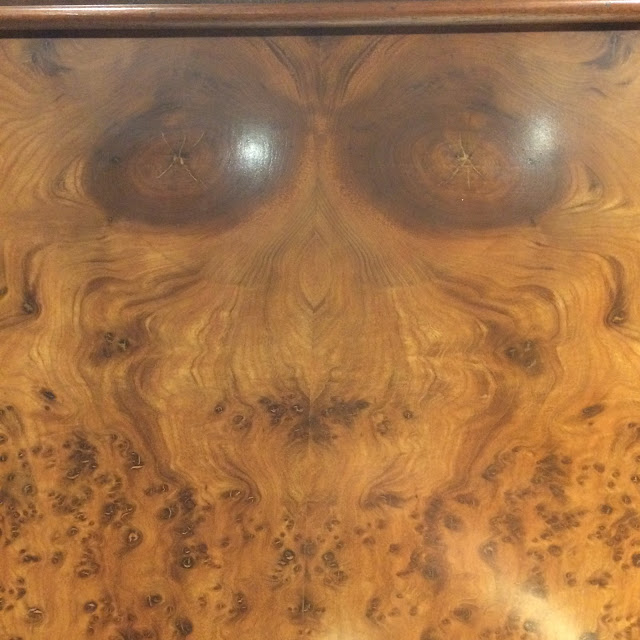Pareidolia: Who's Watching Whom?
 |
| A witch in the burl, Claremont Hotel, Berkeley |
Pareidolia is a phenomenon where your brain discerns meaningful patterns among random or ambiguous stimuli. It's why you recognize two parallel dots above an upward curving line as a smiley face--in fact, seeing human faces where none occur is the most common example of pareidolia. It's why a witch rides with you in one of the elevators at Berkeley's Claremont Hotel. And why some people insist that ancient civilizations built mountain-sized faces on Mars.
I would argue that a lot of representative art depends on pareidolia to communicate meanings in forms in non-realistic ways. Though they are not realistic, we recognize animals and humans in cave paintings made 30,000 years ago at Lascaux and Chauvet because the artists intended to represent animals and humans.
There is also the playful use of pareidolia in forms such as green men, where faces emerge from arrangements of plants. But often times, you just don't know if you are seeing what's there or if your brain is putting it there for you.
And if your brain isn't working with your eyes to tell you what's real and what's not, then who is it working with? And to what end?
 |
| 15th Arr. |


.jpeg)



Comments
Post a Comment